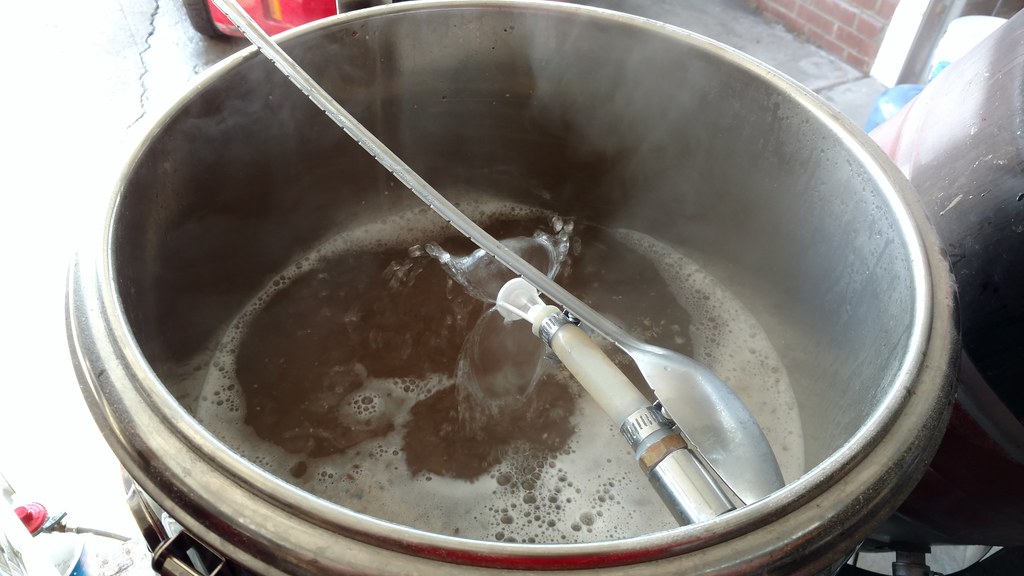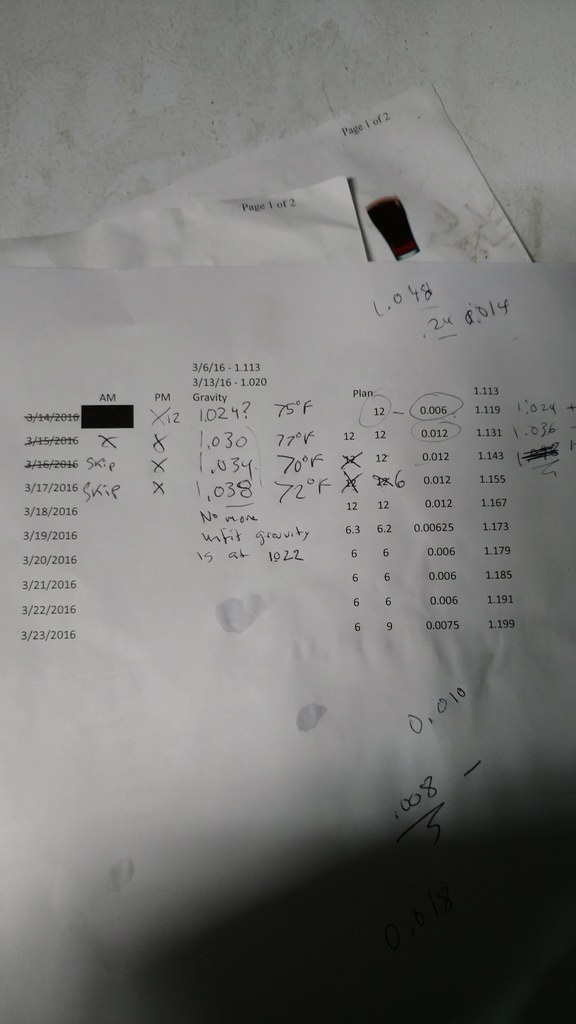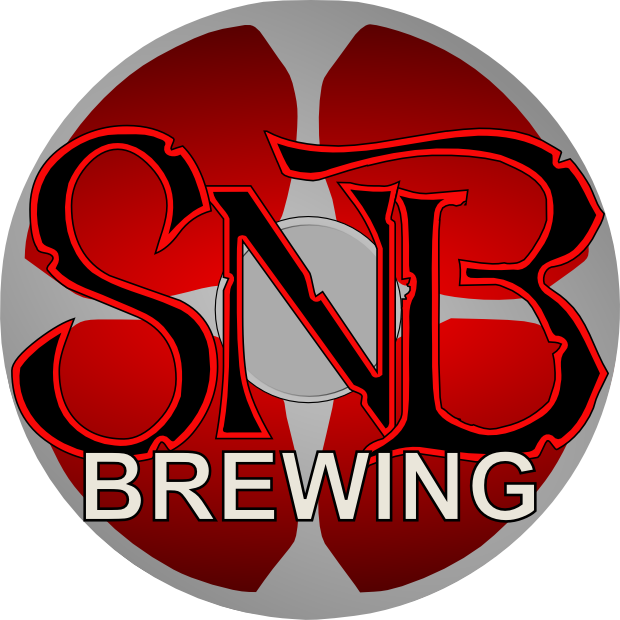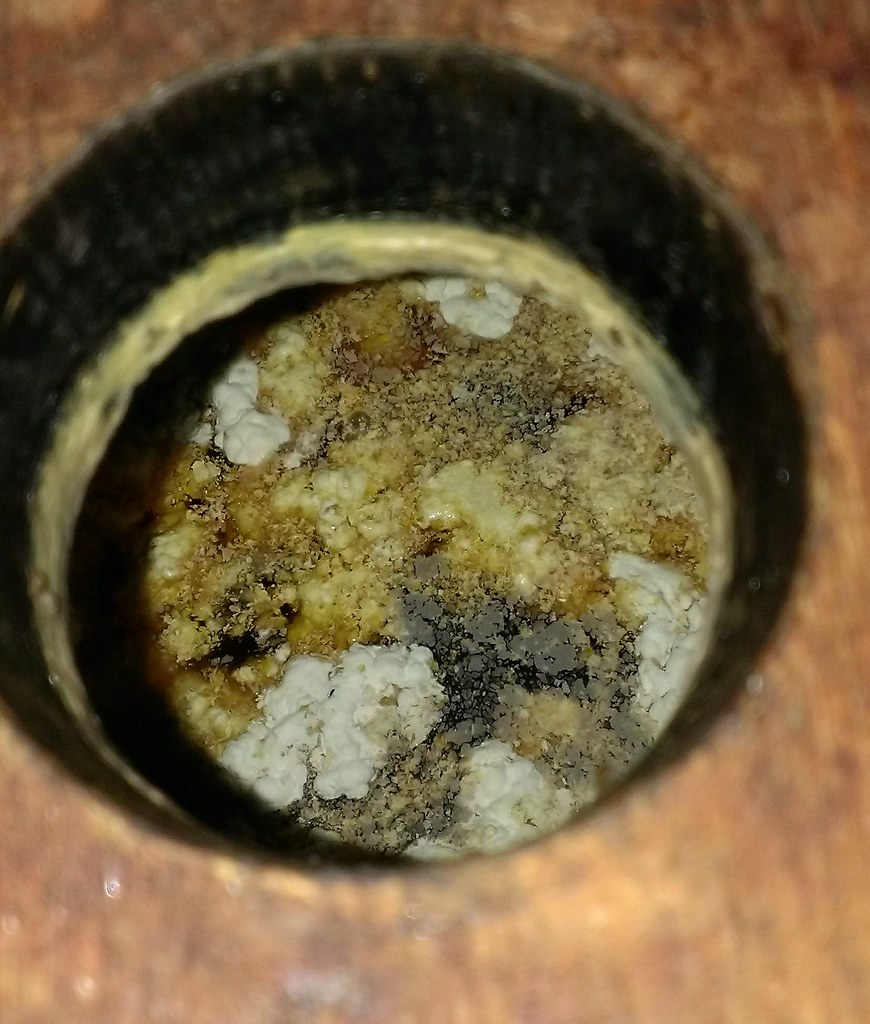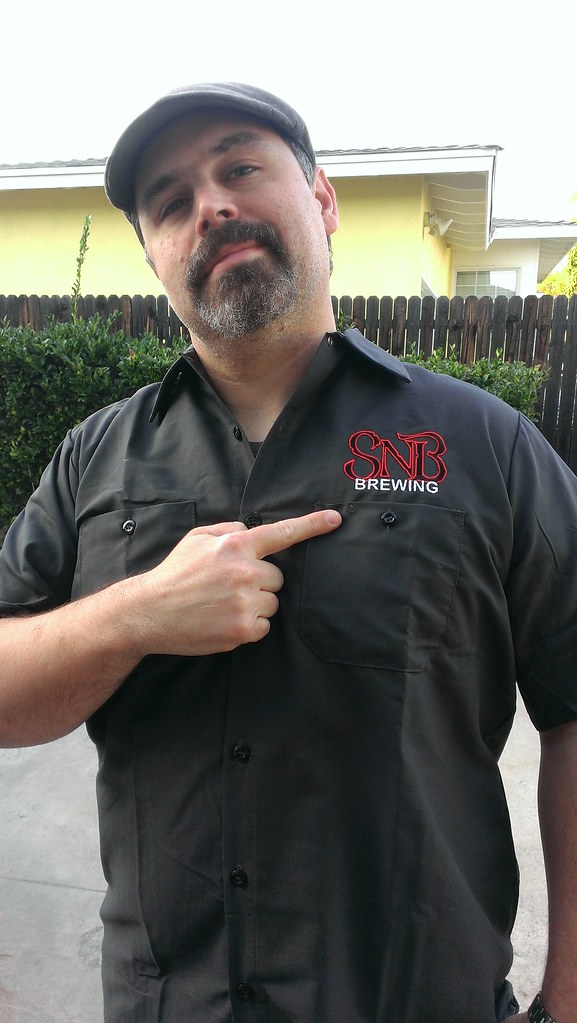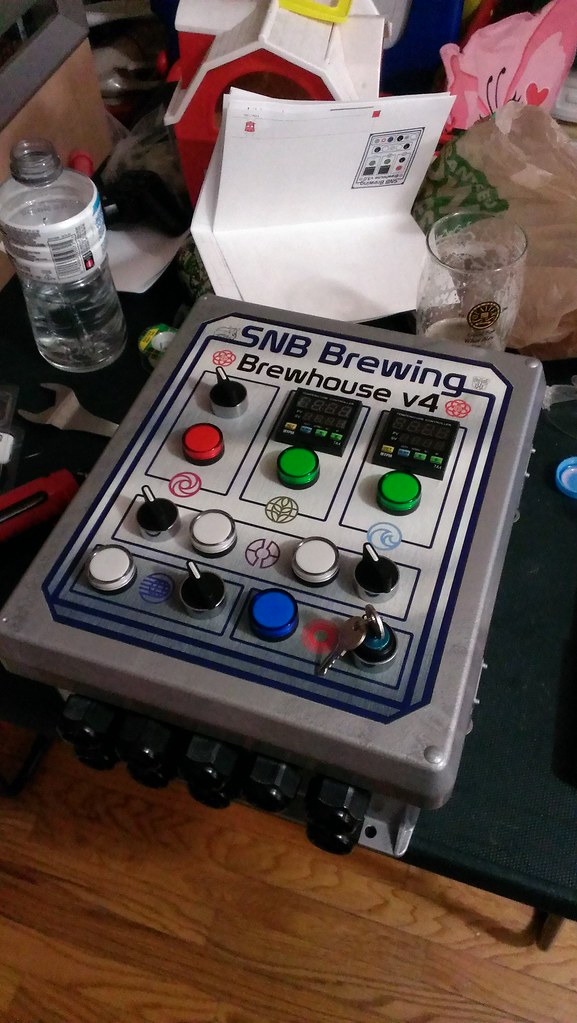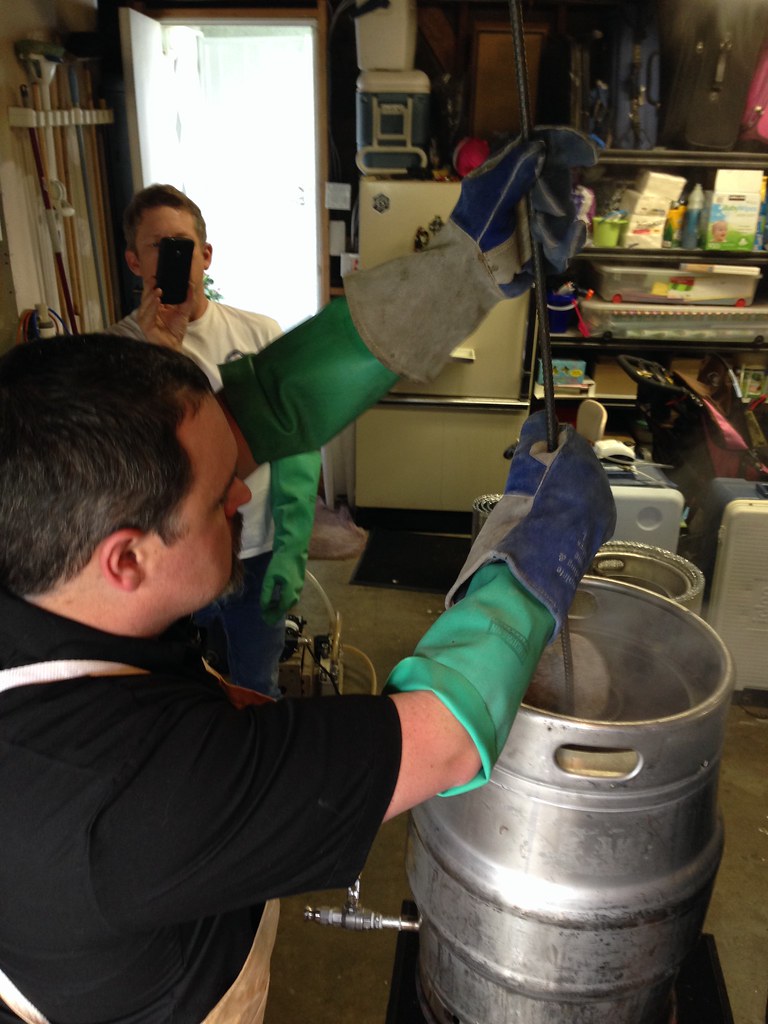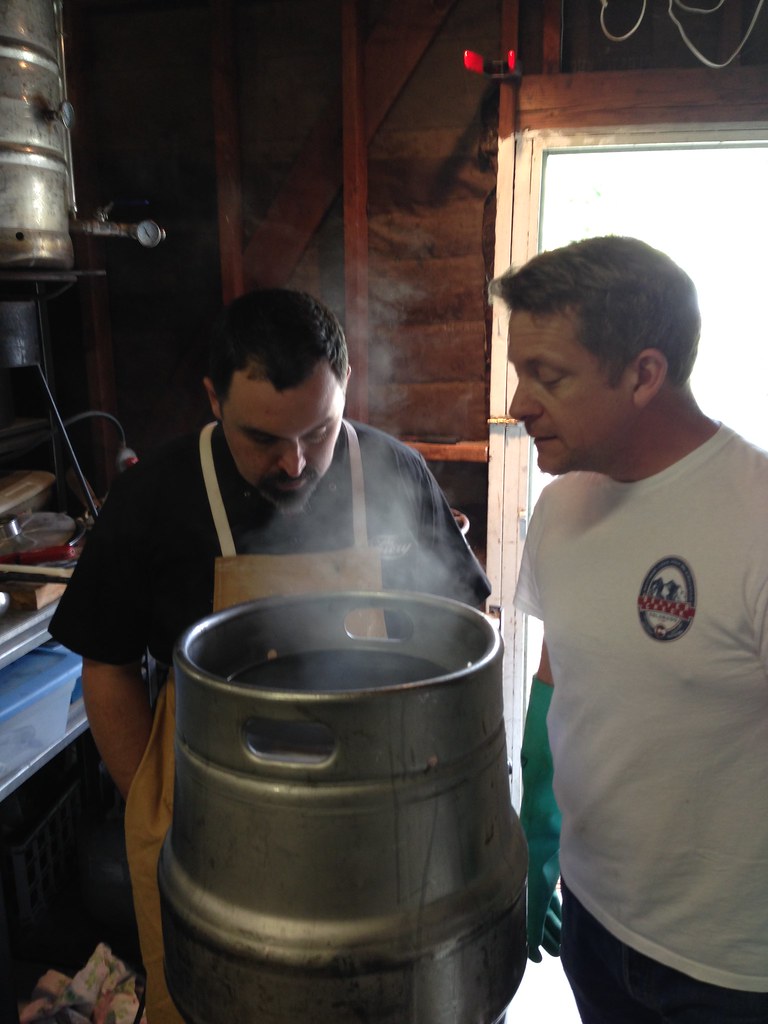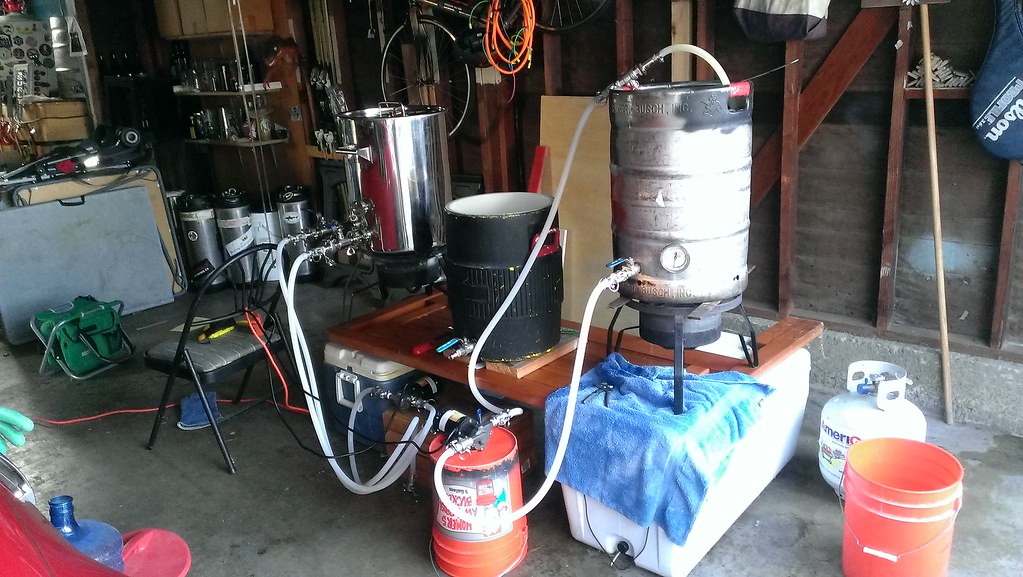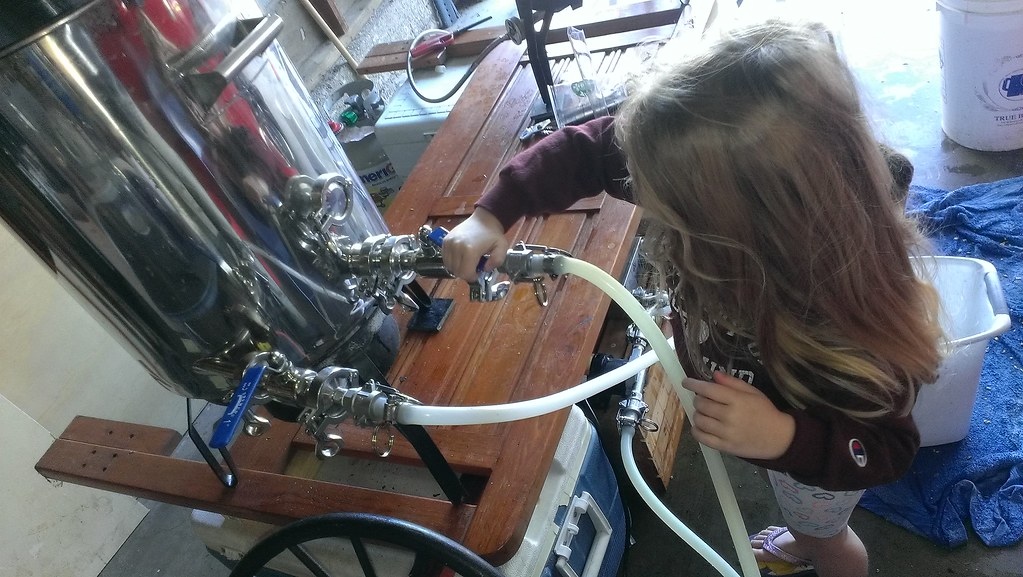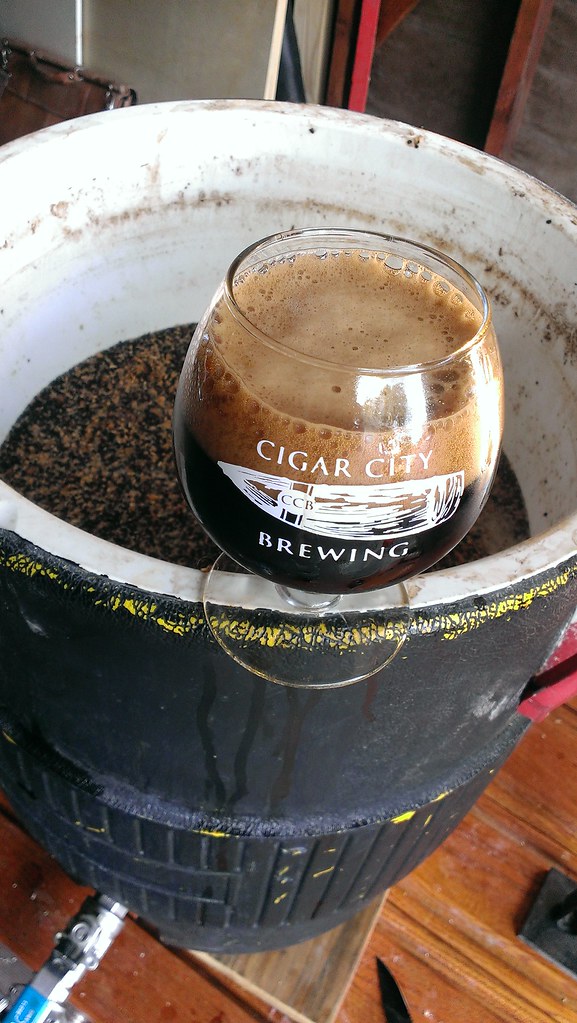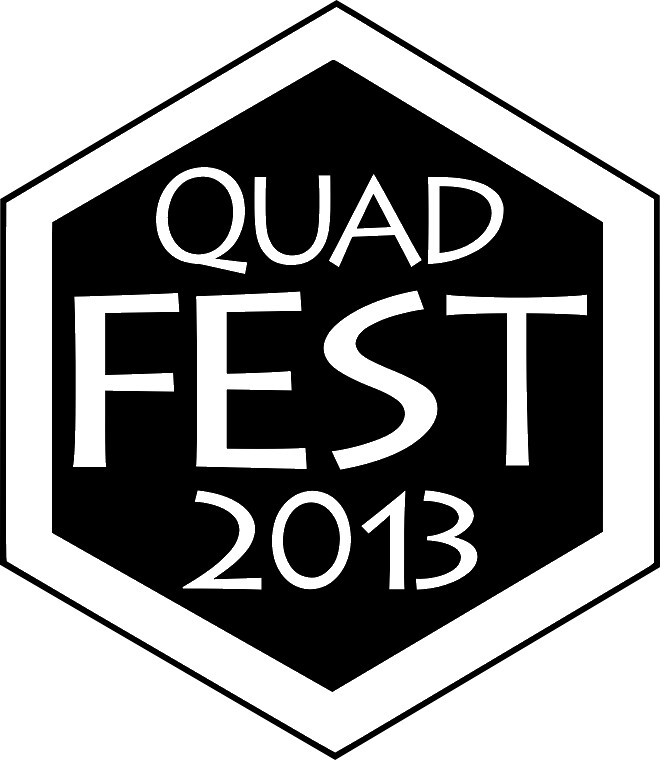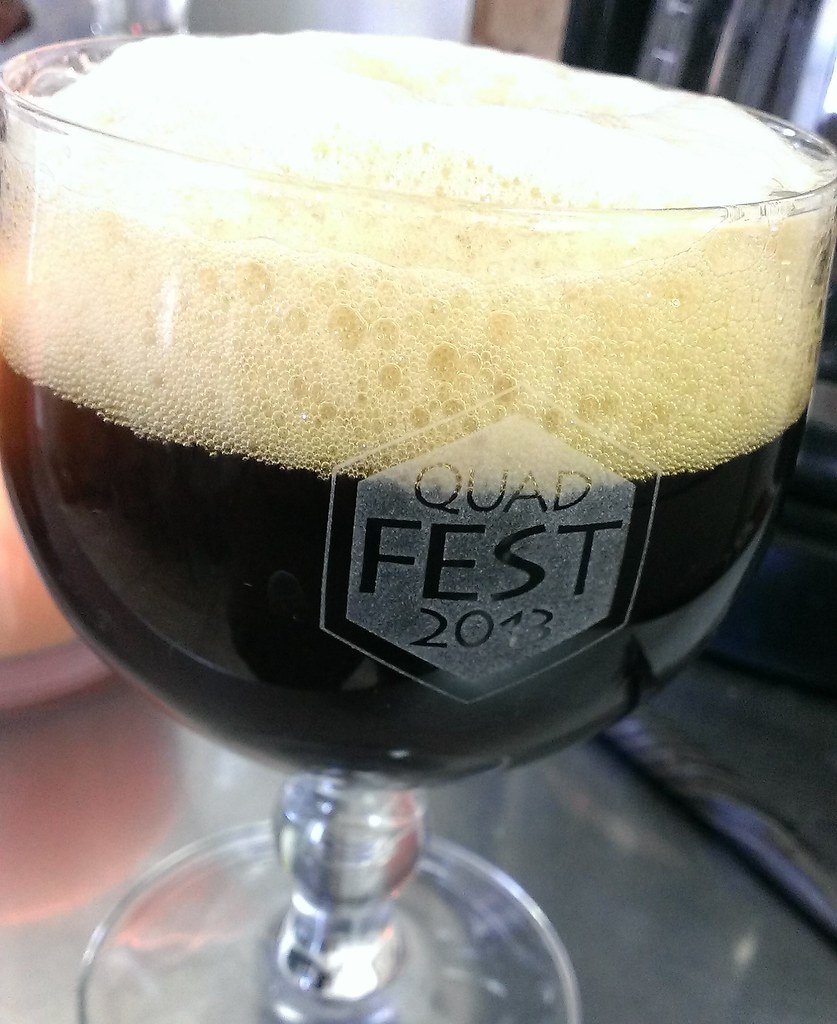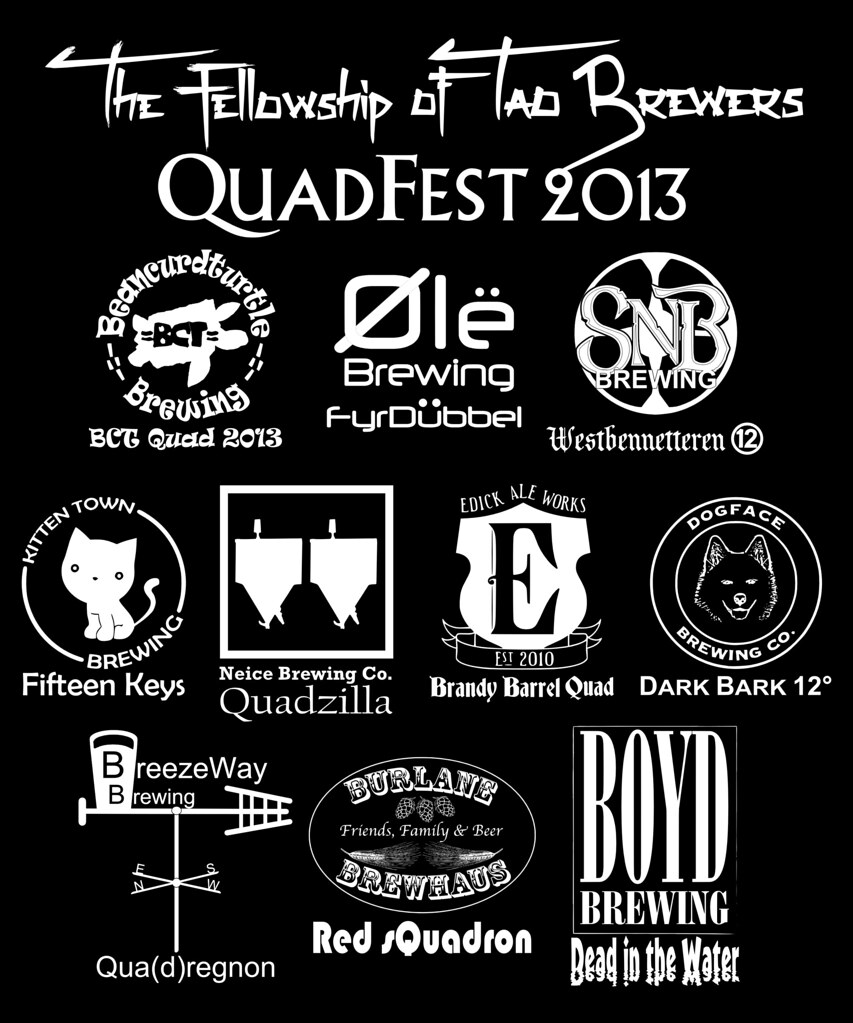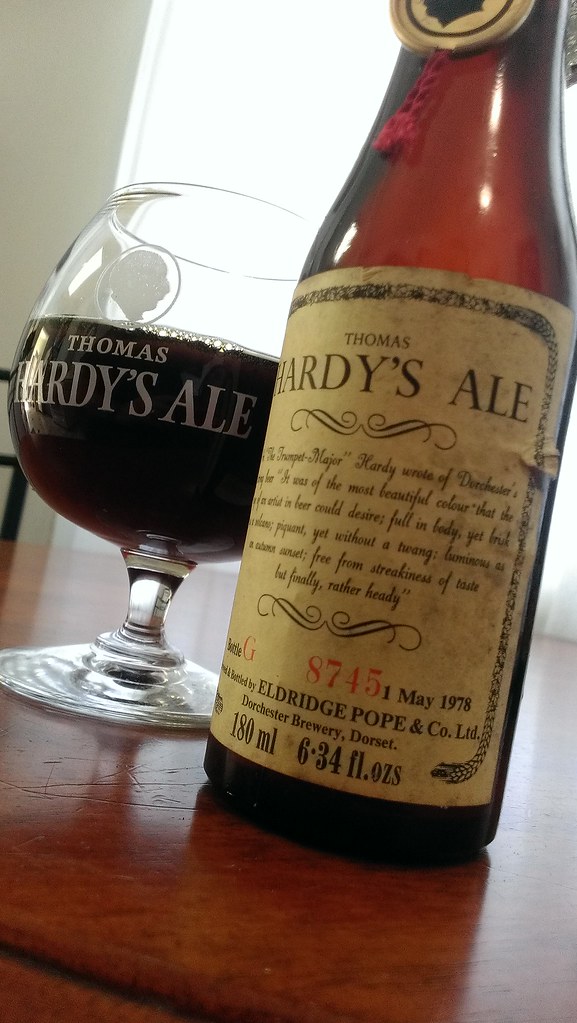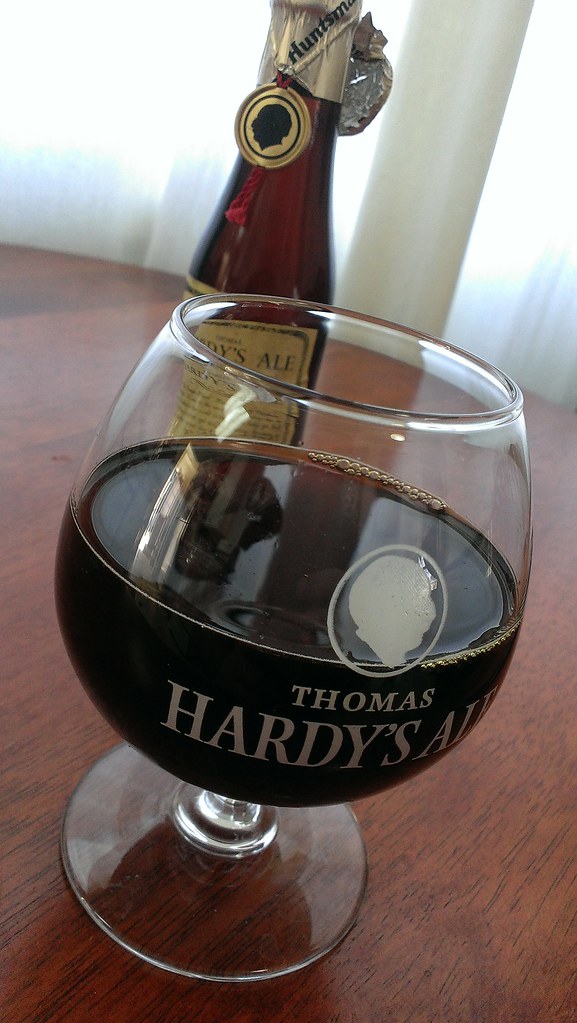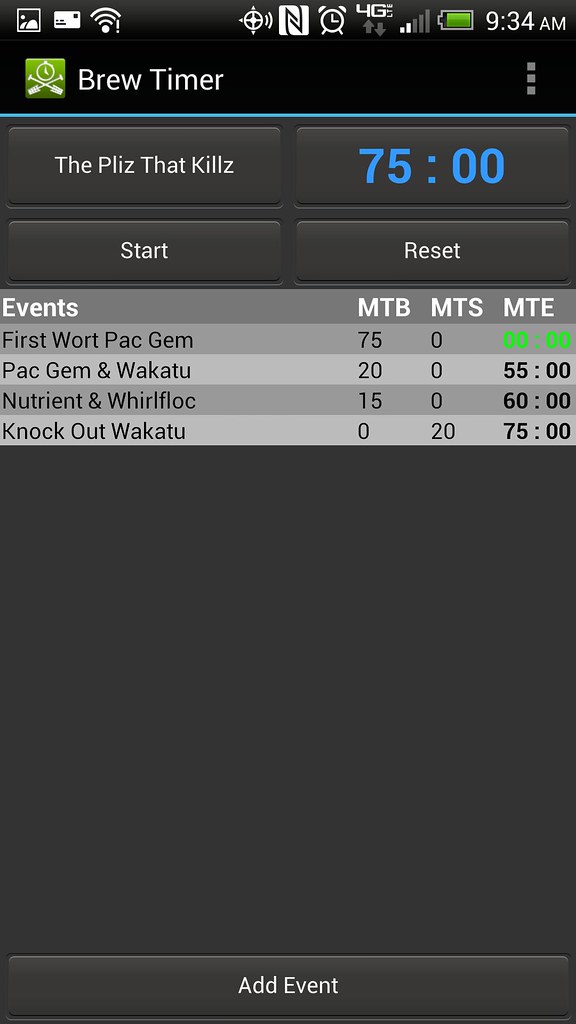After a 3 month primary brawl, using almost 5lbs of sugar, I cracked 20% and created a beast of a beer!
After breaking such a massive barrier I'm briefly sneaking out of my blogging retirement to tell the story of how it came to be.
After breaking such a massive barrier I'm briefly sneaking out of my blogging retirement to tell the story of how it came to be.
The Road There
Over the next few years I would think about brewing it, even occasionally putting it on deck. During this time I would toy with the recipe trying to think both of what I wanted it to be and how I would push it into the abv range. One of my initial recipes had doubling the amount of candi syrup I use in the boil for Westbennetteren 12. During this time I firmed up in my mind that this beer would be more of a supped up quad than anything else.
Eventually I moved away from just trying to overload it with candi syrup in the boil and instead moved towards step feeding it pure dextrose in primary. This is the technique used in brewing Black Tuesday, 120 Minute IPA and several others. I ended up adapting the methodology Scott over at Bertus Brewery used for his DogFish 120 IPA clone with the base recipe being my Westbennetteren 12. Additional notes on brewing massive beers.
With the recipe firmed up and after two back to back years of disappointing batches of Westbennetteren 12 (b3 stalled fermentation followed by a slight infection, b4 flat) I decided that the time to brew the quint had arrived.
The Journey Begins
On Sunday, March 6, 2016 I set out early in the morning to brew essentially Westbennetteren 12 for the fifth time. Overall it was a smooth brewday.
After some discussion on brewday and thinking about it in more depth I've decided that Westbennetteren 20 isn't a Quintuple after all, it's actually something more.
To start with let's take a look at the progression of "trappist" style beers.
Single 4-6% ABV pale in color
Dubbel 6-7.5% ABV dark in color
Tripel 7.5-9.5% ABV pale in color
Quad 9.5-13% ABV dark in color
The pattern that emerges is that odd numbered beers are pale while even numbers are dark with deep red, brown and garnet hues. There is also a pattern in the abv range with little overlap. Between the high range of a quad and the lowest abv I targeted for Westbennettern 20 (18% to 22%) there's 5 percentage points up for grabs. Based on that here is my proposed expansion of trappist styles
Single 4-6% ABV pale in color
Dubbel 6-7.5% ABV dark in color
Tripel 7.5-9.5% ABV pale in color
Quad 9.5-13% ABV dark in color
Quintuple 13-18% ABV pale in color
Westbennetteren 20 18-22% dark in color
As far as style names go there are actually 2 options sextuple or hexatruple
Given the fact I'm probably making many a monk roll over in their grave I'm going with Westbennetteren 20 - The Hex (hexatruple)
The Battle Rages
Fermentation started out fine and within a week it had gone from 1.113 to 1.024. At this point (14 March 2016) I pitched the first starter of WLP099 (Super High Gravity Ale Yeast) along with 12oz of dextrose and some pure O2. My plan out of the Bertus methodology had been to pitch 12 oz of sugar morning and night till it slowed down then moving over to 6 oz additions till it reached the target range. The expectation is that the yeast consumes the sugar at a rate equal to what you are adding. I would check gravity nightly using cleaned and sanitized equipment so that I could add the samples back after measurement.
It became clear pretty quickly that I was adding gravity points faster than the yeast was consuming them. For the 5th addition I moved from 12oz to 6oz to see it that would help, it didn't. During the first 5 days I'd added 54.2 oz of dextrose with the gravity increasing to 1.041. So while it was consuming the sugar, gravity would have been up to 1.051 if it hadn't been, it wasn't consuming it nearly fast enough. At this point I stopped adding sugar and moved gravity checks to every couple of days. My plan was to resume adding sugar once it reached 1.026.
Alas it completely staled out at 1.030 for over 3 weeks. At this point the accumulated OG was 1.140 and calculated alcohol only 17.1%. Too low for me to stop yet not to mention at 1.030 was a little too sweet.
To kick it back into gear I ended up repitching twice - the first was another starter of WLP099 with an additional 12oz of sugar. Unfortunately it didn't get very far and ended up stalling for another month at 1.035.
Not long after, during a meeting of The Fellowship of Tao Brewers at my place we sampled it and discussed my plight. Afterwards I took in all the advice I was given and formulated a cure for my situation.
The Cure
The cure consisted of pitching a liter starter made with 2 packages of Champagne yeast and several capsules of Servomyces. At pitching I also included another couple capsules and some fresh O2 for good measure. I took gravity a couple of days later and it had dropped to 1.026 ~ 18.7% abv. With some solid fermentation progress I decided resume slowing feeding it another 12oz. This took me to a accumulated OG of 1.152.
 |
| Final Gravity |
On June 11th, just a touch over 3 months since the brewday, it hit 1.020. After some back and forth texts with Shawn I set the fermentation chamber to 30°F to cold crash the yeast and stopped the fermentation! Using the advanced gravity formula 1.152 to 1.020 came out to be 20.7% abv.
I lagered it for 2 months to help it clear before I forced carbbed it for bottling as I didn't have any confidence it would bottle condition.
The Conclusion
The last change I made from Westbennetteren 12 was to change the color of the cap. With Westbennetteren 12 being directly inspired by Westvleteren 12 I'd always used gold caps from Bottle Mark. For Westbennetteren 20 I optied to go with SNB "house colors" of red and black, a combo that worked within the existing Green Blue Gold Westvleteren cap color scheme.
Lessons for next time.
- Start with 6oz of sugar per feeding and ensure it gets consumed before adding more
- Keep the upper temp below 82 (one of the reasons it could have stalled is I might have cooked the yeast in the upper 80s)
- Use Servomyces at second pitch
- Drive the FG lower to the 1.014 range, it was still going when I cold crashed it and I find it a little sweet (something which might mellow with age)
- More hops to help counteract the sweetness.
Now that it's all wrapped up it gets a couple months to even out before I share them (1 or 2 might have already slipped out). If we do a QuadFest 2016 I debut a couple bottles then, if not I'll have a private celebration to release them
Cheers
- SNB
Recipe and Instagram Pictures Below the Break
Recipe and Instagram Pictures Below the Break


